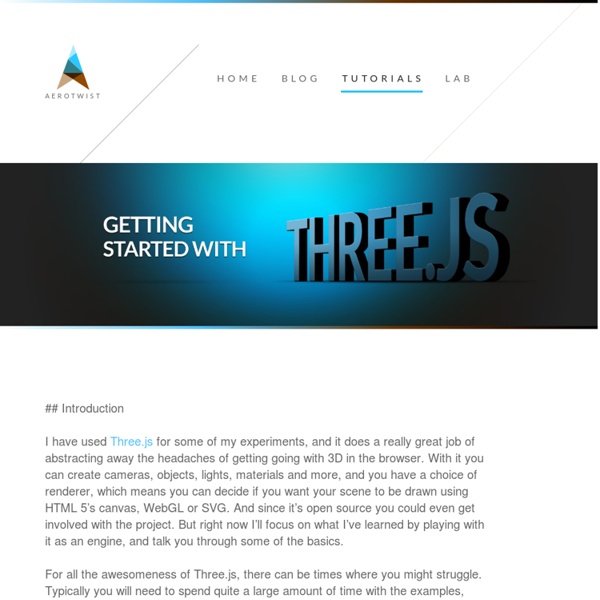Aerotwist - Getting Started with Three.js

Pixel Shaders: An Interactive Introduction to Graphics Programming
A Primer on Bézier Curves
Preface In order to draw things in 2D, we usually rely on lines, which typically get classified into two categories: straight lines, and curves. The first of these are as easy to draw as they are easy to make a computer draw. Give a computer the first and last point in the line, and BAM! straight line. No questions asked. Curves, however, are a much bigger problem. They're named after Pierre Bézier, who is principally responsible for getting them known to the world as a curve well-suited for design work (working for Renault and publishing his investigations in 1962), although he was not the first, or only one, to "invent" these type of curves. So, what if you need to program them yourself? —Pomax (or in the tweetworld, @TheRealPomax) Note: virtually all Bézier graphics are interactive. This page uses interactive examples, relying heavily on Bezier.js, as well as "real" maths (in LaTeX form) which is typeset using the most excellent MathJax library. This book is open source. So far so good.
Related:
Related:



